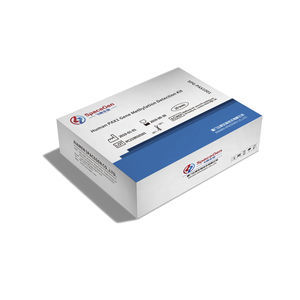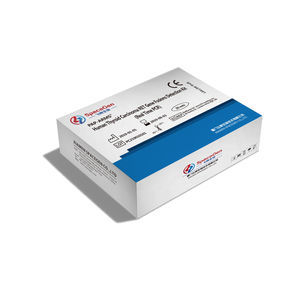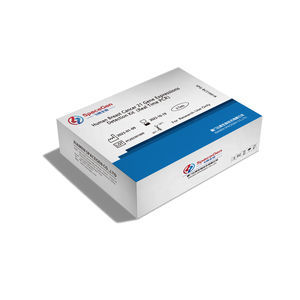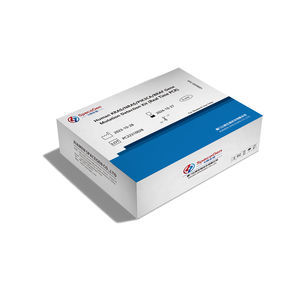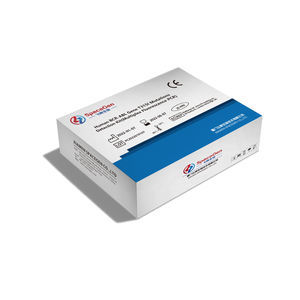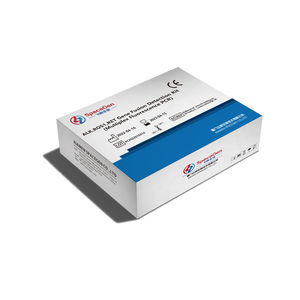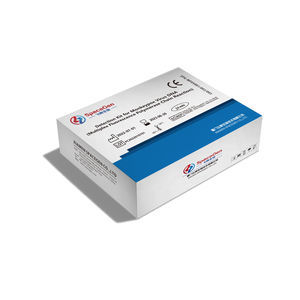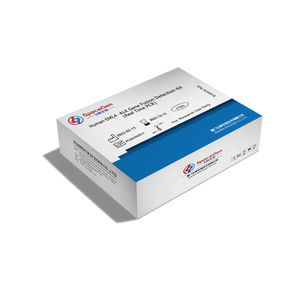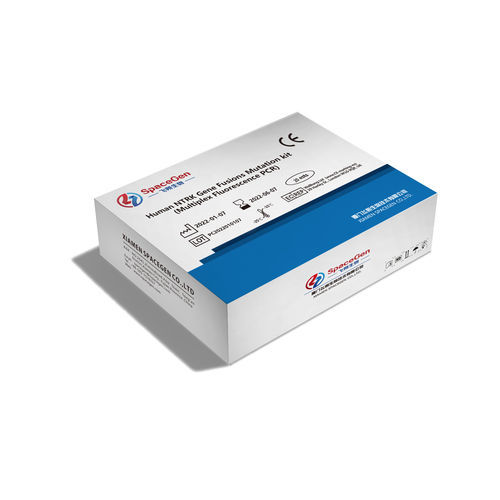

- Company
- Products
- Catalogs
- News & Trends
- Exhibitions
Oncology detection kit PC2022010107NTRK fusionclinicalcell
Add to favorites
Compare this product
fo_shop_gate_exact_title
Characteristics
- Application field
- oncology
- Tested parameter
- NTRK fusion
- Sample type
- clinical, cell
Description
The NeuroTrophin Receptor Kinase (NTRK) family includes three proteins, TRKA, TRKB, and TRKC, encoded by the NTRK1, NTRK2, and NTRK3 genes, these proteins are normally expressed in neural tissues. Activation of TRK structures by NTRK gene fusions is considered as a pan-cancer oncogenic factor.
NTRK gene fusions are found in a variety of adult and pediatric solid tumors. In extremely rare tumor types such as infantile fibrosarcoma and secretory carcinoma, the frequency of NTRK fusion is more than 90%; in common cancers, the fusion frequency is between 0.1% and 2%
NTRK AND TARGETED THERAPY
Although the frequency of NTRK fusions is low in common cancers, the efficacy of NTRK inhibitors is very obvious in patients with NTRK fusion-positive. The FDA approved larotrectinib and entrectinib in 2019 and 2020 for the treatment of patients with advanced solid tumors without alternative therapy or progression , who carry NTRK fusion-positive. This is the second and third pan-cancer FDA-approved tumor-targeted therapy. In clinical trials, the overall response rate (ORR) of larotrectinib and entrectinib reached 75% and 57%, this was achieved after 82% and 63% of the enrolled population had progressed on more than one systemic therapy [2].
Based on the above approval, the National Comprehensive Cancer Network has included NTRK inhibitors in several clinical diagnosis and treatment guidelines. The Chinese Society of Clinical Oncology (CSCO) guidelines for the diagnosis and treatment of non-small cell lung cancer (NSCLC) have also included NTRK inhibitors in the first-line treatment of stage IV NTRK fusion-positive NSCLC [3].
Catalogs
No catalogs are available for this product.
See all of SPACEGEN‘s catalogsRelated Searches
- Assay kit
- Blood assay kit
- Immunoassay assay kit
- Plasma assay kit
- Infectious disease detection kit
- Analysis medical software
- Molecular test kit
- Whole blood detection kit
- Respiratory infection test kit
- Optical assay kit
- Clinical assay kit
- Fluorescence assay kit
- Viewer software
- Real-time PCR test kit
- Research assay kit
- Laboratory software
- Oncology test kit
- Windows medical software
- Laboratory detection kit
- Cell assay kit
*Prices are pre-tax. They exclude delivery charges and customs duties and do not include additional charges for installation or activation options. Prices are indicative only and may vary by country, with changes to the cost of raw materials and exchange rates.



